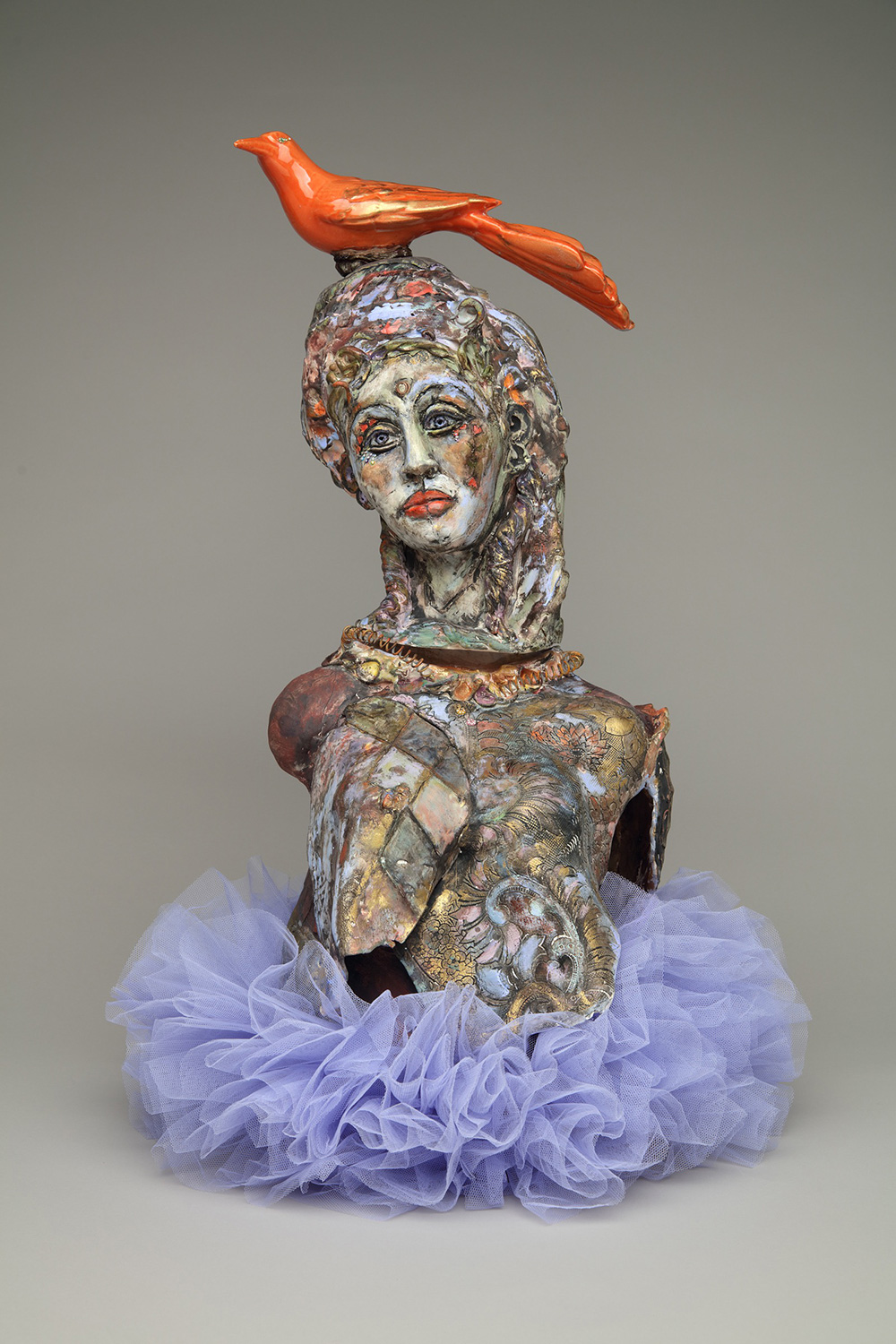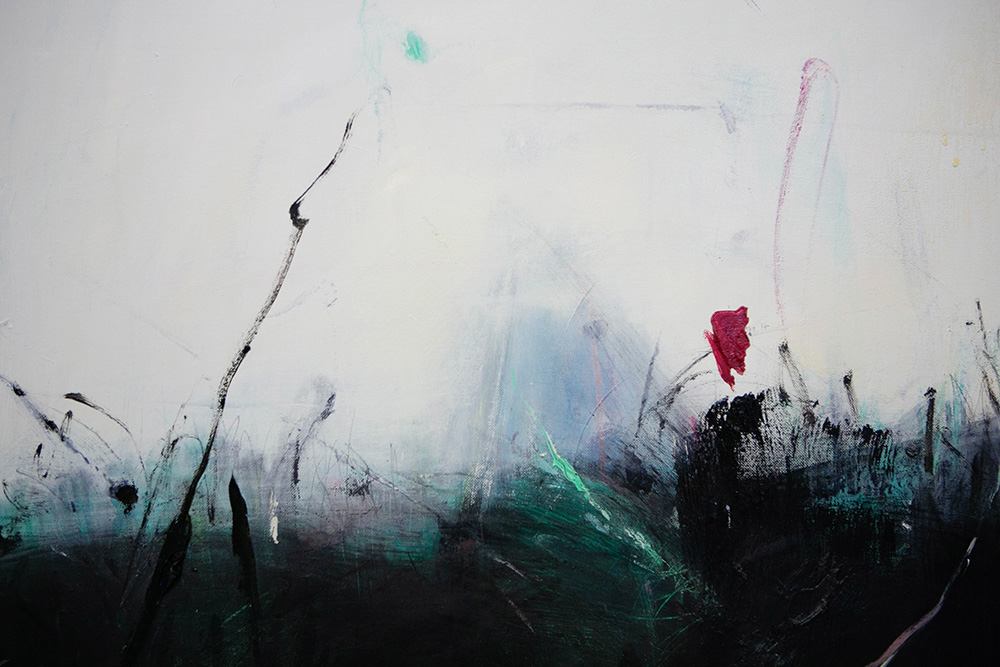Cultural workers (a.k.a. artists) have had a tough go in Vancouver. Last year it was vanishing venues that loomed large; this year it’s surging COVID-19 numbers. But in spite of the difficulties, painters, sculptors and printmakers keep on trucking.
The annual Eastside Culture Crawl, like a great many other arts organizations, had to decide whether to ride out the year, go online only or provide a hybrid version, blending digital and in-person options. They chose the latter.
In addition to studio visits around the neighbourhood, this year’s crawl includes online tours, livestream chats and other offerings. Its 24th edition takes place over two weekends (Nov. 12 to 15 and Nov. 19 to 22), and the website includes a digital scheduler for studio visits, as well as health and safety protocols. Vancouver Coastal Health has confirmed the event can take place despite new recently announced restrictions.
Artistic and executive director Esther Rausenberg is cautiously optimistic about the scope of things, although the number of participants is fewer this year over last, down from the usual 600 to 254 artists, in about half as many venues.
“Getting through the red tape and bureaucracy to ensure a safe experience was a really major time commitment,” she said.
COVID-19 has affected the arts community in profound ways, with classes cancelled, projects shuttered and opportunities to show work to the public lost.
But the notion of shutting everything down doesn’t sit well with folk who are used to soldiering through the most challenging circumstances.
“Many artists have thanked us for continuing on, for providing the chance to showing virtually,” she said. The importance of offering some hope not only for the artists but also for the general public is critical.
The 2020 Crawl experience will be quite different from previous years. In similar fashion to other galleries, patrons can reserve tickets in advance, Rausenberg said.
Crawl organizers worked closely with Vancouver Coastal Health, placing strict limits on the number of people who can be in a given space at a time. As well as timed entry to different venues, the necessity to clean between visitors was factored in, providing time to sanitize bathrooms and other high-touch surfaces like doorknobs. Spontaneous studio visits will be replaced with more careful and formalized procedures.
The sociability factor — different folk milling about, popping back and forth between different venues — isn’t happening this year. But with COVID-19 case numbers continuing to rise, whether people feel comfortable visiting studios in the flesh remains to be seen.
Despite the number of online offerings, it’s hard to fully replace the humans gathering together-type moments: people drinking wine, eating canapés and exchanging thoughts and opinions.
In this aspect, online events face considerable challenges in engaging audiences, even with 360-degree virtual tours and other technical stand-ins. There is simply no getting around the fact that it’s a very different experience to physically stand in front of a piece of artwork, as opposed to looking at it on your computer screen.
Still, Rausenberg sees some positive developments emerging from this period, such an increased focus on the local community, the artists in our midst as it were. With international travel curtailed, the notion of people flitting about to art centres like New York, London or Venice has changed.
The opportunity to look around and see what your neighbourhood artists are up to might help bolster the creative community.
The fact that Vancouver has been the home for many major talents still comes as a surprise to a few folks, despite the success of figures like Jeff Wall, Stan Douglas, Ken Lum and Marian Penner Bancroft, to name only a few.
Rausenberg views this year as an opportunity to “toot our own horn and bring the focus back to Vancouver. There is good art right here in front of us.”
Finally, she is also hopeful about people’s ability to innovate in creative fashion, whether that means having events outside or finding new ways to show creative work.

Despite the success of the crawl, larger questions linger about the ongoing struggle to make a living as an artist.
Even as organizers for basic income make the argument that artists need some form of support to keep life and limb together, many arts organizations have reduced their programs, pivoted to online only presentations or simply cancelled their seasons entirely.
The fragility of the cultural community has become increasingly evident even in the most casual conversation with curators and producers. Major galleries and presenting organizations that program their seasons years in advance face an uncertain future. Smaller groups may disappear altogether.
And there are even larger issues, as the Los Angeles Review of Books recently explored in an expansive look at the life of the creative class through the lens of William Deresiewicz’s book The Death of the Artist: How Creators Are Struggling to Survive in the Age of Billionaires and Big Tech.
The common notion that it’s never been a better time to be an artist thanks to the wonders of the Interweb is proven resoundingly false. The essay asserts that of all the artists currently marketing their work online, only a tiny fraction makes a reasonable living.
The diminishment of larger institutions, with their attendant gatekeepers — curators, publishers, et al. has ultimately not been great for artists, a fact that has been greatly exacerbated by the deprivations wrought by the pandemic.
There are a number of other contributing factors cited, including the decline of professional critics, artists forced to become their own marketing and PR teams, as well as the dictates and demands of the market making for more audience-friendly, less challenging work.
But ultimately it is the brutal and blunt nature of algorithms that determine who has the most power, and a hint, it’s not usually artists: “... when creative work is sold online, sales are radically unequal, following drastic power-law distributions. No matter how many people subscribe, no matter how aggressively Big Tech comes to be governed, selling art, music, or books in a digital world will always entail a lion’s share of the proceeds flowing into the pockets of a small few.”
Still, and in spite of everything, artists find ways to go on, making and showing work. The best thing we can do is support them. ![]()
Read more: Art
















Tyee Commenting Guidelines
Comments that violate guidelines risk being deleted, and violations may result in a temporary or permanent user ban. Maintain the spirit of good conversation to stay in the discussion.
*Please note The Tyee is not a forum for spreading misinformation about COVID-19, denying its existence or minimizing its risk to public health.
Do:
Do not: